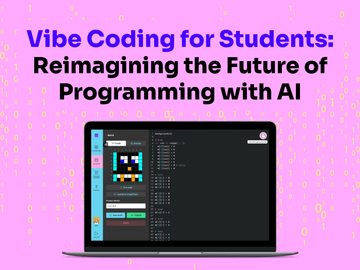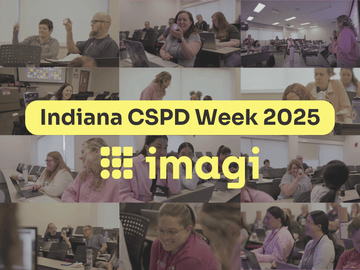

For me, a prospective job applicant, inclusivity in the workplace is not just another tick on a list of how amazing a certain company is. An inclusive environment became a necessity that — I learned — not many professional settings can provide to people who depend on inclusive policies to perform well and succeed. The lack of diversity and representation of people with disabilities in tech is vast, and my story is just a tiny drop in the ocean. Meanwhile, companies that fail to support people with disabilities typically underperform financially in comparison to their more supportive peers by missing the unique opportunity to leverage a critical talent pool.
The U.S. Bureau of Labor Statistics reported that in 2019, only 19.3% of people with different abilities were employed, compared to 66.3% of persons without a disability. A National Science Foundation study further shows that scientists and engineers with disabilities experience higher unemployment rates than their counterparts.
Looking closely at diversity reports of different tech companies, one can find how much work there needs to be done. At LinkedIn, for example, the pool of new-hires in 2016 consisted of only 42% women and 3% persons with disabilities. Four years later, these figures have not risen by much at the company. The percentage of women employed at Amazon, Facebook, Apple, Google, and Microsoft still ranges between 28 and 42%, and other historically underrepresented minorities can be found in fractions of these numbers.. Google’s workplace, for instance, is made up of just 32% women and 6.1% people with disabilities in 2020.
When combined with the already-existing gender gap in tech, the disability gap creates an even greater barrier for people like me to enter the field. The reasons vary from inadequate academic support to lack of role models, but the main one remains the same: lack of accessibility.
Even before entering the professional sector, university students with disabilities receive less support and feel more excluded than their peers. Organizations and institutions tend to focus on meeting “default” needs. Non-accessible participation leaves many students with disabilities out of early career opportunities, resulting in a greater employment gap in workplaces.
Consider, for instance, the technical interview processes that most tech jobs require. The vast majority of workplaces around the world are unfamiliar with offering special accommodations — be it technology assistance for a phone screening interview or a distraction-free venue for an onsite interview. For example, Candidate A requires keyboard assistance for expressing their communication better due to a disability. The interviewer, if unable to meet Candidate A’s needs for accommodation, fails to judge Candidate A’s skills objectively and make the most accurate conclusion, thereby rejecting this applicant from the pool. Candidate B, on the other hand, does not require any accommodations and therefore does fit the “default” criteria of the selection process. This allowed Candidate B to have a greater chance of being evaluated objectively and getting recruited .
When it comes to accommodations for physical disabilities, research shows that candidates with a disability were “only 27% as likely to receive a job offer or [advance] in the hiring process” compared to other equally qualified counterparts.
Without accommodations, it becomes difficult to succeed in an environment that favors only one way of participation. Disclosing a disability and asking for accommodation, in this case, becomes a challenging task. Moreover, many hiring managers are unfamiliar with due procedures or are reluctant to follow them regardless of the legal implications in some countries. In the worst cases, these employee candidates are already met with implicit prejudice and covert discrimination. As a result, the process that is supposed to be a medium to show a candidate's best qualities becomes a place of mismatched interaction (the term introduced by Kat Holmes in her book “Mismatch: How Inclusion Shapes Design”) and potential social rejection.
If this exclusion cycle is not disrupted in its early stages of development, it becomes almost impossible to break it. Consequently, people who are already underrepresented in the field cannot enter it if the only way to do so is not accessible to them. We must make the process of getting in more accessible; otherwise, the gap will never be reduced and mismatched workplace interactions will continue to thrive.
An obvious way to improve accessibility is to first address the root of the issue: the homogeneity of the tech industry. Previous articles on the imagiLabs blog, such as How I Became a Programmer While Not Looking Like One and Why Gender Equality in Tech is a Prerequisite for Gender Equality in Society, shed light into the process of breaking the industry’s “defaults” and increasing diversity in tech. Organizations and educational institutions must first question the accessibility of their recruitment practices and then actively support a range of ways for people to show up and participate, fostering a culture of inclusion and belonging. Embracing individual experiences without expecting them to fit a certain template is the fastest way to embrace authenticity and hear voices that were too often excluded from the field before.
In the past few years, more and more people have started to share their personal experiences and hold the corporate world accountable for its lacking diversity of representation. Accessibility advocate Meenakshi Das, for example, recently shared her sentiments about having a disability and becoming a software engineer at Microsoft, “Growing up watching television and movies, they always portrayed successful people who worked at big companies as able-bodied, and who spoke extremely fluently...Naturally, I never thought I would fit in and did not see myself as working at big corporations. I didn’t think I would be accommodated or accepted.”
The number of organizations supporting underrepresented groups in tech has also been increasing. Lime Connect, the largest not-for-profit network for young professionals, provides tech opportunities for students with disabilities. Another leading nonprofit resource for business disability inclusion, Disability:IN, provides opportunities for people with disabilities across partner organizations.
From people speaking out about different workplace experiences to organizations offering a wide range of programs and accommodations for people with disabilities, the power dynamic starts to slowly change towards diversity, equity, and inclusion. Although there is still a long way to closing the disability gap in tech, educational institutions and corporate organizations must continue to create inclusive workspaces. The faster we as a society drop our expectations of having only one way of contributing to the field, the more professionals we will see emerging and bringing their diverse perspectives to build a better world, for all of us.
Experiencing this organizational shift first-hand, I feel empowered to own my identity and share my story. Interning at imagiLabs — a company with a mission to create diversity in the world of technology — has given me the opportunity to grow as a person and develop professionally, all while embracing who I already am.
This post was written by Amina Kobenova, former Creative Content and Coding Developer and incoming iOS Development Intern at imagiLabs.




